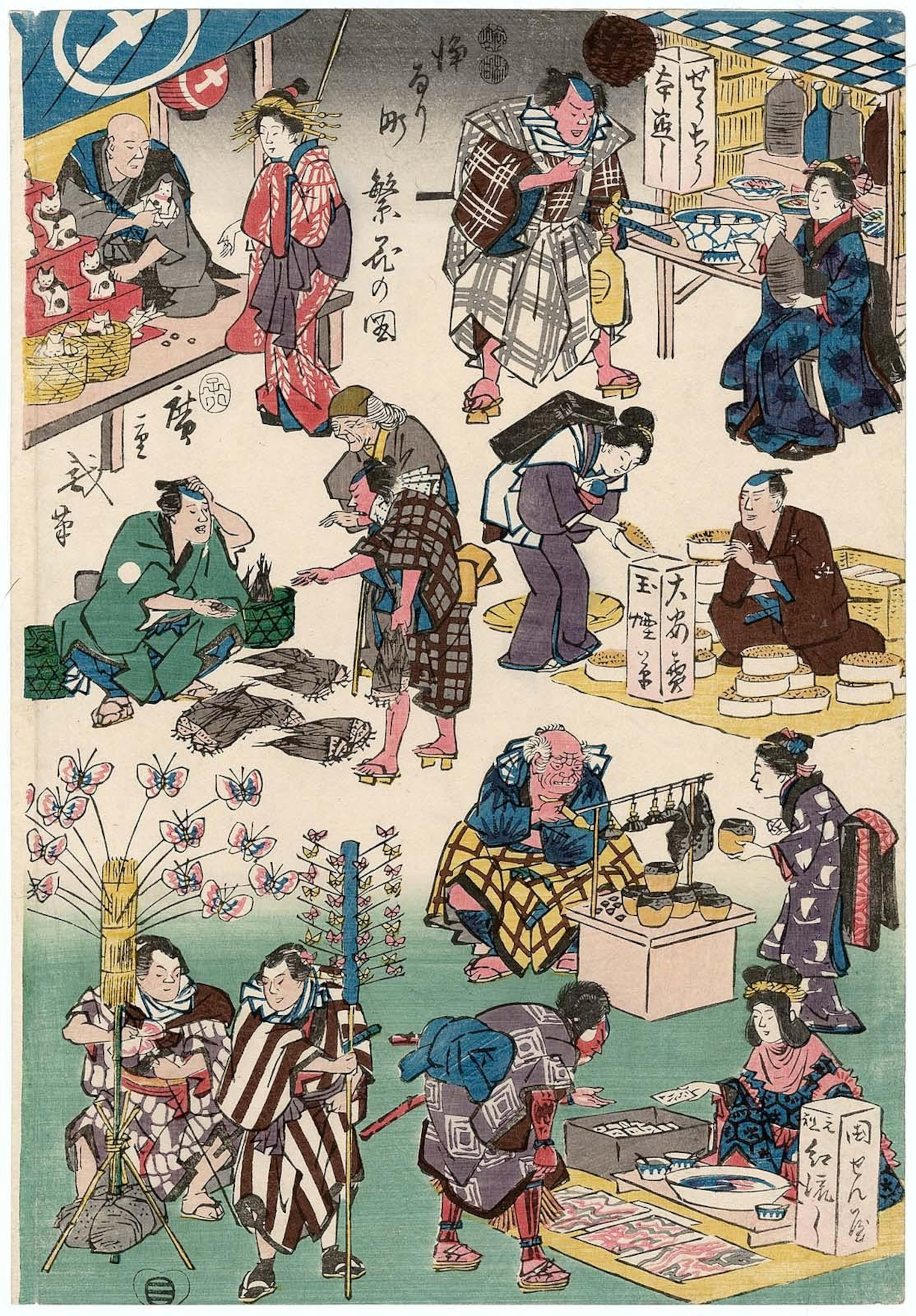Legend has it that in old Japan, an elderly woman, following the advice of her feline companion, crafted ceramic figurines from Imado-yaki pottery. She took these figurines to a nearby shrine, hoping to sell them. As promised by the cat, these unique ceramic figures, depicting what we now know as the Waving Cat, quickly gained popularity, rescuing the woman from poverty. This tale marks one of the charming origin stories of the Maneki Neko, or “beckoning cat,” a ubiquitous symbol of good fortune across many cultures today.
 A vintage woodblock print by Hiroshige Utagawa depicting Maneki Neko, the waving cat, being sold at a bustling Japanese market in 1852.
A vintage woodblock print by Hiroshige Utagawa depicting Maneki Neko, the waving cat, being sold at a bustling Japanese market in 1852.
An 1852 Ukiyo-e woodblock print by Hiroshige Utagawa from the series “Flourishing Business in Balladtown,” illustrating the maru-shime no neko, a form of Maneki-neko, being sold at a vibrant market.
The enduring appeal of the waving cat is further cemented by its early depiction in art. In 1852, the renowned printmaker Hiroshige Utagawa captured these fortune cats in his woodblock print series, “Flourishing Business in Balladtown.” This artwork is considered the oldest known visual representation of the Maneki Neko, showcasing its presence and popularity even in the mid-19th century.
But why are these felines so strongly associated with prosperity? The connection runs deeper than just folklore. In 1602, a significant imperial decree was issued in Japan, liberating all domestic cats. This wasn’t an act of mere benevolence; it was a strategic move to harness the cats’ natural prowess in controlling rodent populations, particularly to protect the vital silk industry. Even after the silk trade declined, the image of cats as guardians of prosperity persisted, evolving into the symbolic waving cat we recognize today.
Beyond practical pest control, the waving cat embodies a cultural belief in reciprocity and respect for these animals. Yoshiko Okuyama, a professor of Japanese Studies at the University of Hawaii at Hilo, explains, “The importance of Maneki-neko lies in its mythologized power to bring good fortune to the caretaker.” This sentiment is echoed in the Japanese proverb, neko wo koroseba nanadai tataru, which translates to “If you kill a cat, it will haunt your family for seven generations.” This saying underscores a deep-seated belief in the potent, and even vengeful, spirit of cats. In essence, the waving cat reminds us of a simple yet profound principle: care for the cat, and it will, in turn, look after you, bringing good fortune into your life and business.
